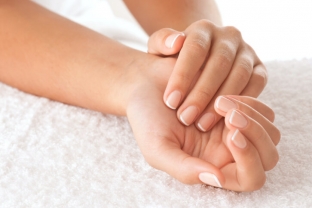Defects and diseases of the nail plates are quite common and manifest themselves very differently. About half of the diseases of the nail plate are caused by a fungal infection, the remaining cases are provoked by a disease of the nail apparatus – onychodystrophy. Changing the structure, shape and color of the nail leads to psycho-emotional problems and reduces the quality of life, especially for women. The causes of onychodystrophies can be found on estet-portal.com. Treatment of onychodystrophies should be based on a deep understanding of the structure of the nail. What is the structure of a human nail, find out further in our article.
What is a nail plate? Structure of the nail
The nail is a horny plate that lies on the epithelium of the terminal phalanges of the toes and hands. Why a person needs nails, read further on estet-portal.com. The outer surface of the nail is smooth, but the inner one has ridges and grooves. The main substance that takes part in the structure of the nail is keratin. The strength of tissues depends on the adhesion and interposition of cells. Also, the strength depends on the structure of the keratin fibers themselves, located between the cells parallel to the surface of the plate.
In the structure of the nail, the amount of cysteine is of great importance, on which the strength of the nail plate depends.
The amount of cysteine is genetically programmed, so the strength and hardness of nails is inherited. The nail plate is surrounded on three sides by nail folds. The nail bed includes the dermis and epidermis, which has a ridged surface corresponding to the grooves and ridges of the nail plate.
The structure of the nail and hyponychia. Why does a person need nails?
The epidermis is called the hyponychia and is made up of cells of the stratum basale and spinosum that are capable of dividing. Thanks to the hyponychium, the nail is able to grow in width.
In the proximal part of the hyponychium are epidermal cells that are located under the root of the nail and are called the matrix. Its upper cells differentiate into the horny substance, and its lower cells proliferate. This structure of the nail allows it to grow in length, pushing out of the groove, and sliding to the distal part of the phalanx along the surface. The epidermis of the posterior nail fold adheres tightly to the surface of the nail, blocking access to the matrix and protecting it from external influences.
Nail functions:
- protection of the proximal phalanges from mechanical damage;
- by the appearance of the nails one can judge the state of human health;
- provide hardness to the fingertips during various manipulations;
- nails are indispensable for a person in certain activities (playing stringed musical instruments).

What can affect the growth and structure of the nail?
The structure of the nail is arranged in such a way that it grows throughout life, while being constantly updated and capable of self-healing. Strict diets, lack of vitamins and minerals in the diet significantly slow down the growth of the nail.
Irreversible changes in the nail plate begin after damage to the matrix.
Nail examination includes assessment of color, translucency, surface character, integrity, strength, plate thickness and connection to surrounding structures. Read more about nail deformity on our website. A normal nail has a pale pink color due to the blood supply to the nail bed.
Violation in the structure of the nail or lack of nutrition provokes the development of onychodystrophies, which you can learn about in our next article.







Add a comment